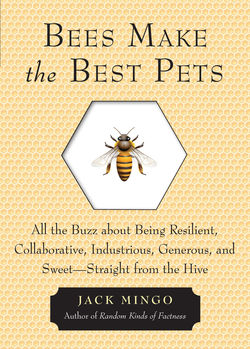Читать книгу Bees Make the Best Pets - Jack Mingo - Страница 9
MY CONVERSION
ОглавлениеI don't often have road-to-Damascus, struck-by-lighting, instant-enlightenment, come-to-Jesus, scales-falling-from-the-eyes moments. However, my conversion to the Church of the Living Bees was one of those moments. (Say hallelujah, somebody!)
Friends, I had always been apathetic to bees at my strongest moments, slightly scared of them at my weakest. That all changed on a visit to an environmental awareness house in Berkeley, California in the summer of 1978, when I was a young man. It was there that I saw an observation hive.
Previously, I'd seen a few of these beehives with Plexiglas on the sides so you can see inside but had always been indifferent to them.
I loved ant farms, despite their mournful quality, because you could actually see the ants doing something recognizably antlike: digging freeform tunnels, eating, drinking, and carrying the bodies of their constantly expiring farm mates for burial. But beehives? There was no concrete activity I could really figure out. It just looked like modestly repugnant bugs running around randomly, like a lot of cockroaches scurrying around in a box.
Little did I know. I was a fool. Once lost, now found. Blind, but now can see.
What did it take? Somebody with a little knowledge and about two minutes. He pointed out a soccer ball-sized ring of yellows, oranges, and reds in the beeswax cells. This was the pollen that the bees had collected. The bright ring was a line of demarcation. Outside of it, the bees filled the comb cells with nectar; inside it was the nursery, containing eggs and larvae.
The outside of the circle was suddenly understandable. Field bees arrived from outside, carrying either nectar or pollen. Just inside, they transferred their cargo to warehouse workers who put it where it belonged. It was no less (and, frankly, no more) interesting than watching the loading docks of a warehouse.
The inside of the pollen circle, however, made up for it. The placement of the pollen is convenient because pollen is what the nursemaid bees feed bee larvae—little white grub-like things, each inside its own cell. (Adult bees eat only honey.)
Then I saw the queen. She was surrounded by a small circle of worker bees. Each was facing her, looking like petals on a daisy. The queen was sticking her long, pointy ass into an empty cell, laying an egg. I waited and when she finished, she was pushed and pulled by her attendants to the next empty cell. I looked closely at the cell she had just left and, sure enough, there it was, the egg, white and smaller than a grain of fine sand.
I watched the nursery for quite a while. It was abuzz with activity: Eggs being laid, larvae squirming, and the bigger ones were being sealed into cells with a pollen/wax mix, to make the final transition to full-fledged bee.
It was so cool. I wanted my own observation hive. It would be a few years, but I eventually would get one of my own. But more about this later.
WHY BEES MAKE THE BEST PETS, TAKE 1
1 They are among the nicest stinging insects you'll ever meet.
2 A bee is (literally) as cute as a bug. Actually cuter than most.
3 Honey.
4 Beeswax.
5 They protect your garden from elephants. Seriously. They may work with other animals, too.
6 They have soft fuzz that is almost irresistible. It glistens in the sun for great photos.
7 They are amazing natural architects.
8 They make their own building materials.
9 They are ten times cleaner than any pet you've ever owned.
10 They make your house smell better instead of worse.
